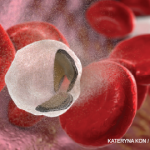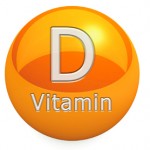Pediatrics
Monitor and Treat Low Vitamin D Insufficiency in Children
Bowden SA, Robinson RF, Carr R, Mahan JD. Prevalence of vitamin D deficiency and insufficiency in children with osteopenia or osteoporosis referred to a pediatric metabolic bone clinic. Pediatrics. 2008;121: e1585–e1590.
Abstract
Objectives: The purpose of this work was to determine the prevalence of vitamin D deficiency and insufficiency in children with osteopenia or osteoporosis and to evaluate the relationship between serum 25-hydroxyvitamin D levels and bone parameters, including bone mineral density (BMD).
Materials and Methods: Serum 25-hydroxyvitamin D, 1,25 dihydroxyvitamin D, parathyroid hormone, and other bone markers, as well as bone mineral density, were obtained for 85 pediatric patients with primary osteoporosis (caused by osteogenesis imperfecta or juvenile idiopathic osteoporosis) and secondary osteopenia or osteoporosis caused by various underlying chronic illnesses. Pearson’s correlation was used to assess the relationship between vitamin D levels and different bone parameters.
Results: Vitamin D insufficiency (defined as serum 25-hydroxyvitamin D <30 ng/mL) was observed in 80% of patients. Overt vitamin D deficiency (defined as serum 25-hydroxyvitamin D <10 ng/mL) was present in 3.5% of patients. Using a more recent definition for vitamin D deficiency in adults (defined as serum 25-hydroxyvitamin D <20 ng/mL), 21.1% of the patients had vitamin D deficiency. There was a significant inverse correlation between 25-hydroxyvitamin D and parathyroid hormone levels. There was a positive correlation between 1,25 dihydroxyvitamin D and parathyroid hormone, alkaline phosphatase, and urine markers for bone turnover.
Conclusions: Vitamin D insufficiency was remarkably common in pediatric patients with primary and secondary osteopenia or osteoporosis. The inverse relationship between 5-hydroxyvitamin D and parathyroid hormone levels suggests a physiologic impact of insufficient vitamin D levels that may contribute to low bone mass or worsen the primary bone disease. We suggest that monitoring and supplementation of vitamin D should be a priority in the management of pediatric patients with osteopenia or osteoporosis.
Commentary
Osteoporosis in adults may begin in childhood. Clearly, the majority of bone development occurs during childhood and reaching a “personal best” in bone mass at that time gives one an advantage in avoiding osteoporosis in the future. This study by Bowden et al examines the levels of 25-hydroxy vitamin D and 1, 25 dihydroxyvitamin D in 85 children referred to a metabolic bone clinic for evaluation of possible osteoporosis. In addition, DXA scans, parathyroid hormone levels, and levels of metabolic markers of bone turnover, urine pyridinoline, and deoxypyridinoline were determined.
All patients were referred for a clinical suspicion of osteoporosis. Reasons for referral included osteogenesis imperfecta (28%), immobilization due to cerebral palsy or muscular dystrophy (26%), chronic steroid use (13%), idiopathic osteoporosis (4%) and other reasons such as inflammatory bowel disease, celiac disease, and genetic syndromes (28%). The majority of patients (87%) were Caucasian, 62% were boys, and 14% were on anticonvulsants, which interfere with vitamin D metabolism. Interestingly, relatively few were on vitamin D and calcium supplementation (five patients), despite having health factors that are known in adults to increase the risk of osteoporosis.
The authors defined osteoporosis as the lumbar BMD being more than two standard deviations below their weight-matched and pubertal development–matched (Tanner staging) normative data. Osteopenia was defined as being >1 standard deviation below weight and developmentally matched controls. Levels of serum vitamin D were defined as “insufficient” if less than 30 ng/ml, “deficient” if less than 20 ng/ml, and “overt vitamin D deficiency” if less than 10 ng/ml.
Of the 85 patients, 73 were able to have BMD measured and 69 patients had a Z-score less than -1. Fully 80% (69 patients) had insufficient vitamin D levels below 30 ng/ml and 21.1% had levels below 20 ng/ml. The median value was 24 ng/ml, with the 75 percentile at 28.75 ng/ml. There was an inverse correlation between serum PTH levels and 25-OH vitamin D and a positive correlation between 1,25-OH vitamin D and PTH, urine pyridinoline, and deoxypyridinoline. There were no correlations between gender, age, race, anticonvulsant use, and fracture rate. Moreover, no seasonal variations of vitamin D levels were noted.
The authors conclude that low levels of vitamin D are common in children with osteopenia or osteoporosis and supplementation of vitamin D should part of the therapy of these conditions.
It appears that low bone mass is not uncommon in children with chronic diseases. Clearly, it should be treated. But how? And, to go one step backward, how does one diagnose it? Most bone densitometers will give a Z-score for the lumbar bone densities, which compares the child’s bone density to that of age-matched controls. However, children with chronic diseases are often delayed with regard to physical maturation. Thus, if one uses the machine-generated Z-score, which is based solely on age, to identify low bone mass, one runs the risk of comparing apples to oranges—and overdiagnosing osteoporosis. The authors have avoided this pitfall since they have a locally generated set of norms that use Tanner staging and weight rather than age; they corrected their results using these data.1 This information has been published, but is standardized to only one manufacturer’s machine. Even with this correction, the majority of their patients had some degree of low bone mass. The 25-OH vitamin D levels were insufficient in 80% of their patients if you use the adult data as a cut-off. This appears to be an equally valid assumption for children as PTH secretion increases as vitamin D levels drop in children, as it does in adults.
This manuscript left me wondering what use DXA scans are for children. DXA scans for adults are used to predict future fracture risk and evaluate the need for bisphosphonates or other bone-strengthening agents. Children and teenagers, even with low bone density, appear to have a much lower fracture risk. Indeed, the authors did not demonstrate any correlation between insufficient vitamin D levels and fracture. Hence, there is no evidence that bisphosponates are useful in children with low Z-scores, especially if they have not suffered a low-impact fracture. Moreover, long-term effects of these drugs are unclear—not only to the patient but, for girls who will eventually have children, perhaps to a developing fetus years down the line.
This article has made me decide to be more aggressive in monitoring 25-OH vitamin D and PTH levels in my patients and to be much more rigorous in recommending vitamin D and calcium supplementation. Since the American Academy of Pediatrics admits there are no data with regard to vitamin requirements in children, but recommends the daily intake not exceed 2000 IU/day for age one and older, I am requesting parents assure an intake of 400 IU vitamin D and 500 to 800 mg of calcium from all sources younger than nine, and 800 IU vitamin D with 1300 mg calcium for ages nine and older. I will save the DXA for those with low-impact fractures—which thankfully are rare—to monitor changes in bone density. I remain reluctant to use anti-resorptive agents in most children and adolescents, other than for patients with genetic disorders such as osteogenesis imperfecta.


